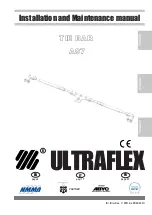
micro
Tec
12
2.6 Informal Instructions Issued by the Manufacturer
Preparation of the Specimen
Due attention should be paid in the preparation of specimens with regard to making the
correct choice of the medium used for embedding and encapsulation of the specimen
and its curing and infiltration time.
Temperature of the Specimen
Microtomic sectioning is generally carried out at room temperature (except in the case
of frozen specimens). Increases in temperature will soften the paraffin wax. The
heating up of paraffin wax specimens due to direct exposure to sunlight or their
proximity to any other source of heat is to be avoided.
Choosing the Knife
Depending upon the ground facet in question, a clearance setting at an angle of 18 to
20 degrees is to be selected. In the case of re-sharpened knives, use the knife height
adjustment facility to set the height of the knife.
Levers and Clamping Screws
Securely tighten all levers and clamping screws on the knife holder and the specimen
orientation device. >
Overtightening could result in damage of knife holder!!
Cutting Speed
Rule:
“The harder the material, the slower the cutting speed“.
Starting the Cut
Take care when approaching the knife or the specimen.
2.7 Particular Zones of Danger
Important!
Knives are sharp!
Always set the
knife guard
in its proper position after completing the operation – even
if it’s for a brief moment of time – and make sure it is properly seated.
Summary of Contents for CUT4060E
Page 36: ...microTec 36 Notice...











































